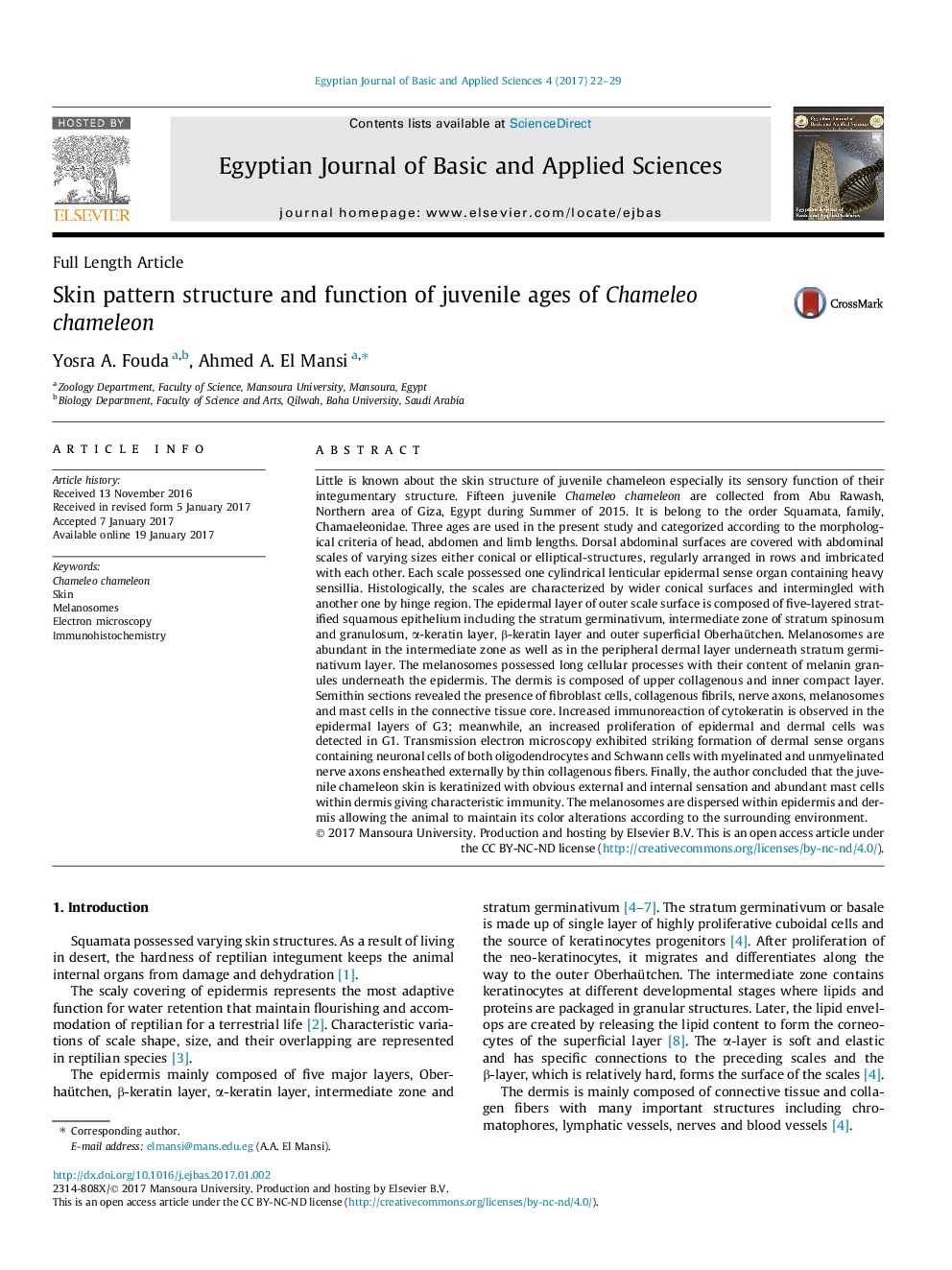| Article ID | Journal | Published Year | Pages | File Type |
|---|---|---|---|---|
| 6952382 | Egyptian Journal of Basic and Applied Sciences | 2017 | 8 Pages |
Abstract
Little is known about the skin structure of juvenile chameleon especially its sensory function of their integumentary structure. Fifteen juvenile Chameleo chameleon are collected from Abu Rawash, Northern area of Giza, Egypt during Summer of 2015. It is belong to the order Squamata, family, Chamaeleonidae. Three ages are used in the present study and categorized according to the morphological criteria of head, abdomen and limb lengths. Dorsal abdominal surfaces are covered with abdominal scales of varying sizes either conical or elliptical-structures, regularly arranged in rows and imbricated with each other. Each scale possessed one cylindrical lenticular epidermal sense organ containing heavy sensillia. Histologically, the scales are characterized by wider conical surfaces and intermingled with another one by hinge region. The epidermal layer of outer scale surface is composed of five-layered stratified squamous epithelium including the stratum germinativum, intermediate zone of stratum spinosum and granulosum, α-keratin layer, β-keratin layer and outer superficial Oberhaütchen. Melanosomes are abundant in the intermediate zone as well as in the peripheral dermal layer underneath stratum germinativum layer. The melanosomes possessed long cellular processes with their content of melanin granules underneath the epidermis. The dermis is composed of upper collagenous and inner compact layer. Semithin sections revealed the presence of fibroblast cells, collagenous fibrils, nerve axons, melanosomes and mast cells in the connective tissue core. Increased immunoreaction of cytokeratin is observed in the epidermal layers of G3; meanwhile, an increased proliferation of epidermal and dermal cells was detected in G1. Transmission electron microscopy exhibited striking formation of dermal sense organs containing neuronal cells of both oligodendrocytes and Schwann cells with myelinated and unmyelinated nerve axons ensheathed externally by thin collagenous fibers. Finally, the author concluded that the juvenile chameleon skin is keratinized with obvious external and internal sensation and abundant mast cells within dermis giving characteristic immunity. The melanosomes are dispersed within epidermis and dermis allowing the animal to maintain its color alterations according to the surrounding environment.
Related Topics
Physical Sciences and Engineering
Computer Science
Signal Processing
Authors
Yosra A. Fouda, Ahmed A. El Mansi,
